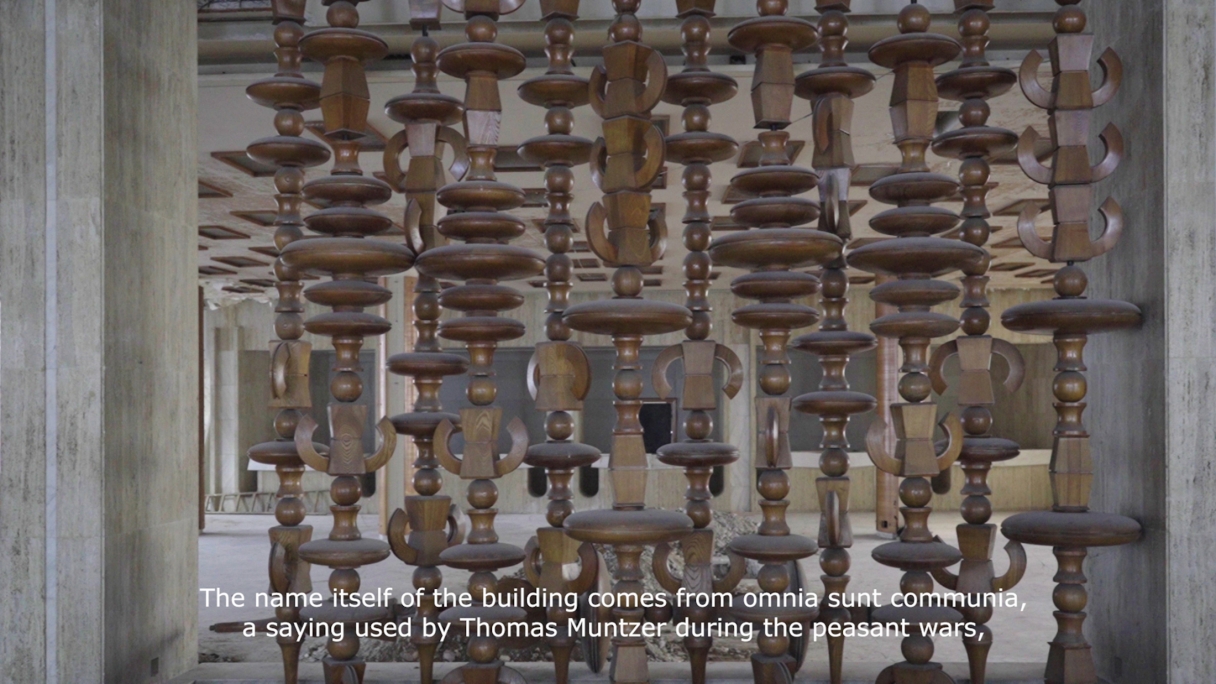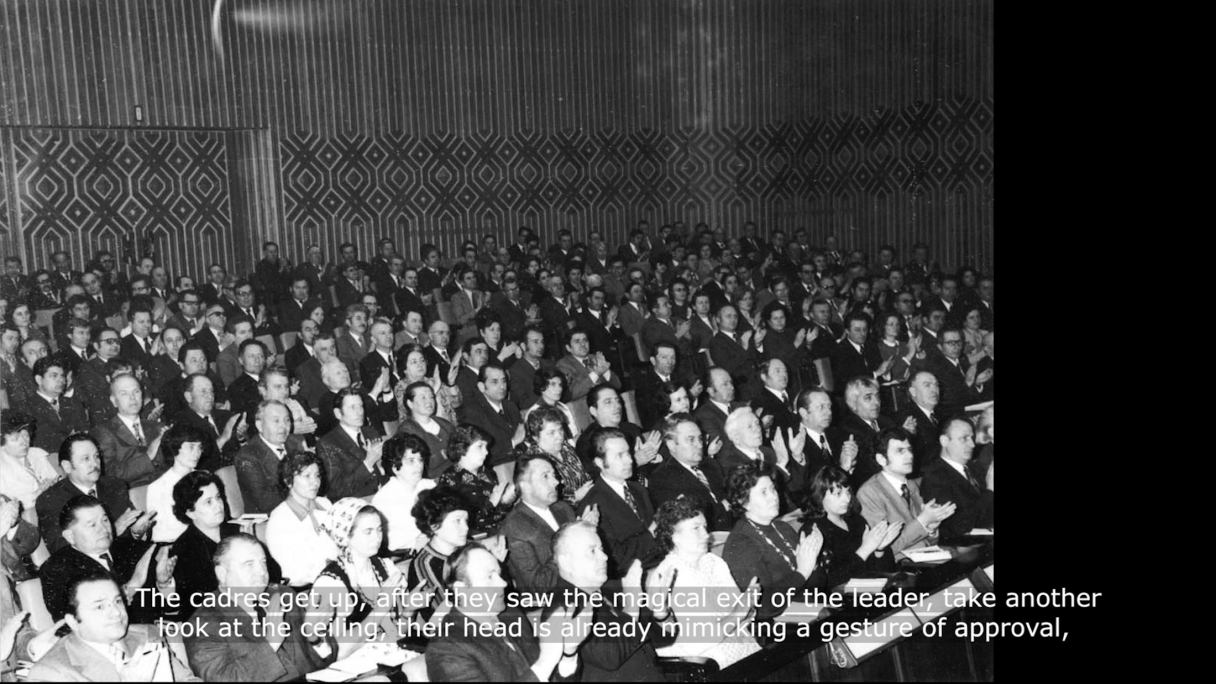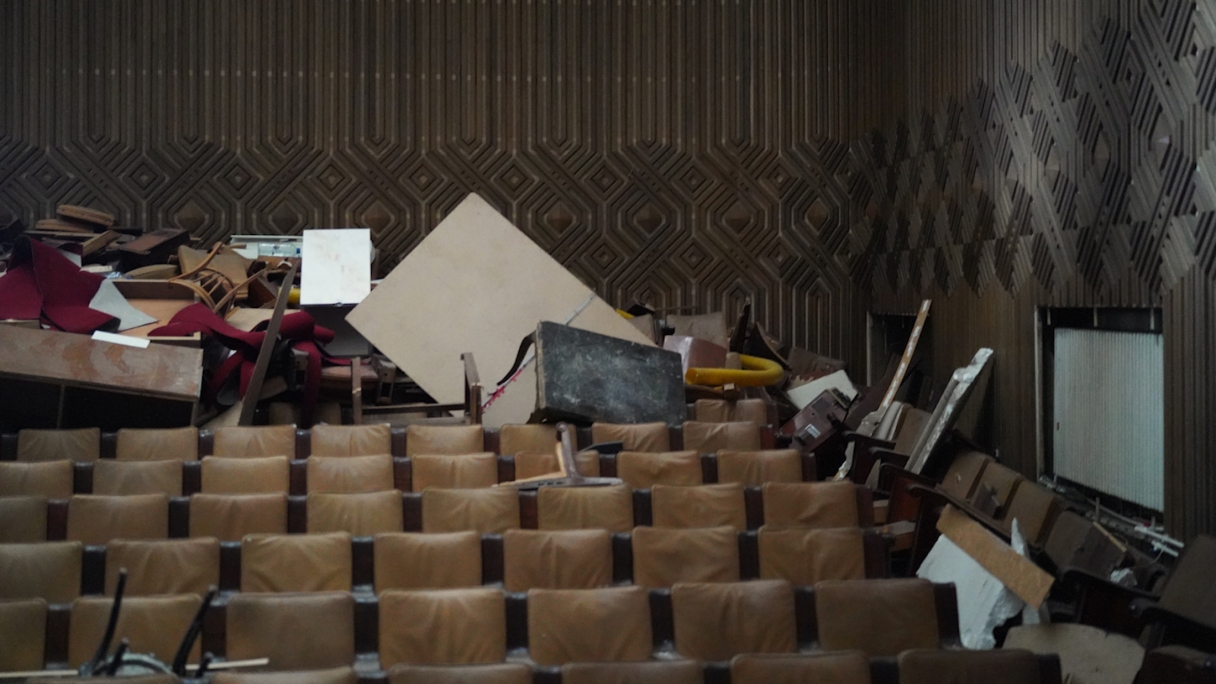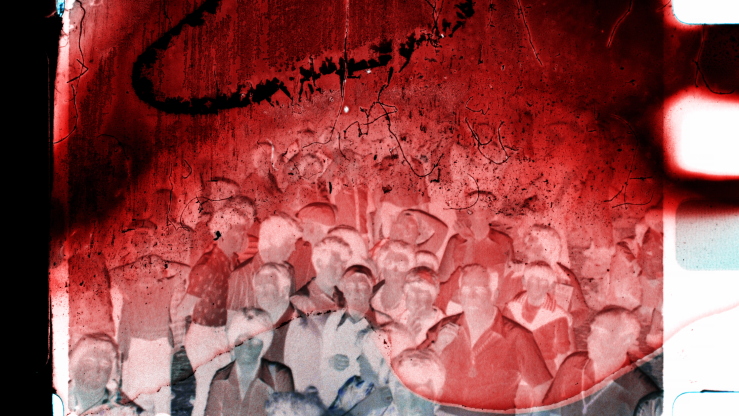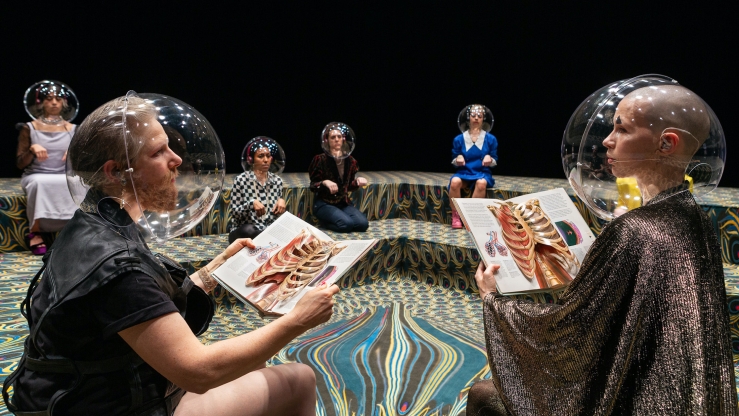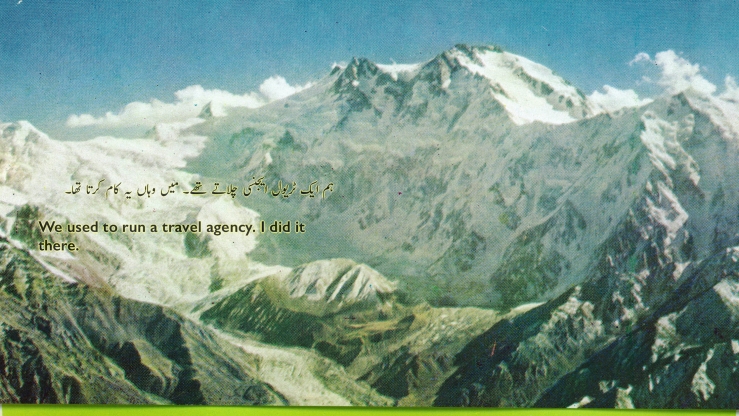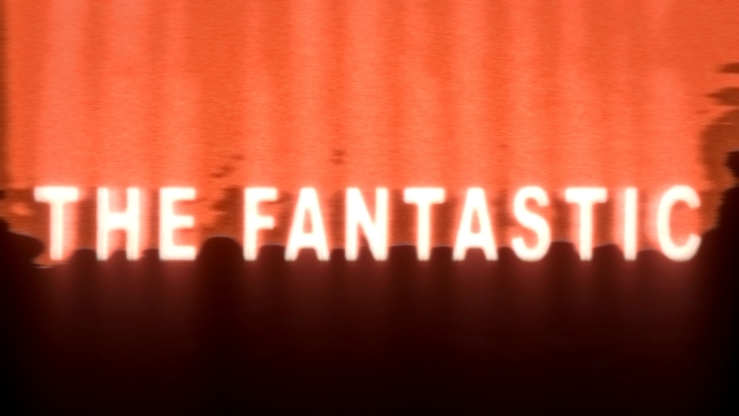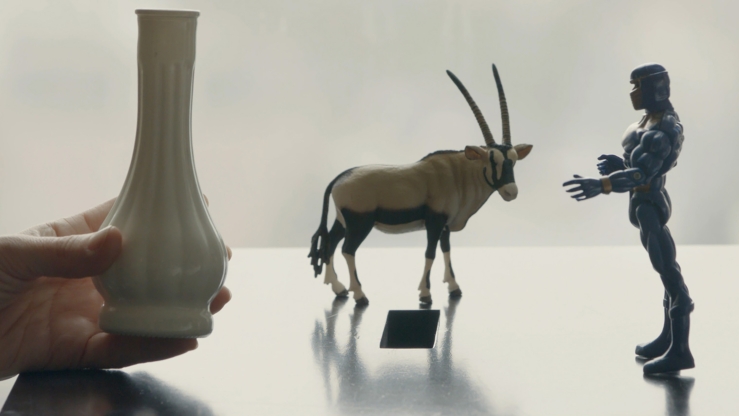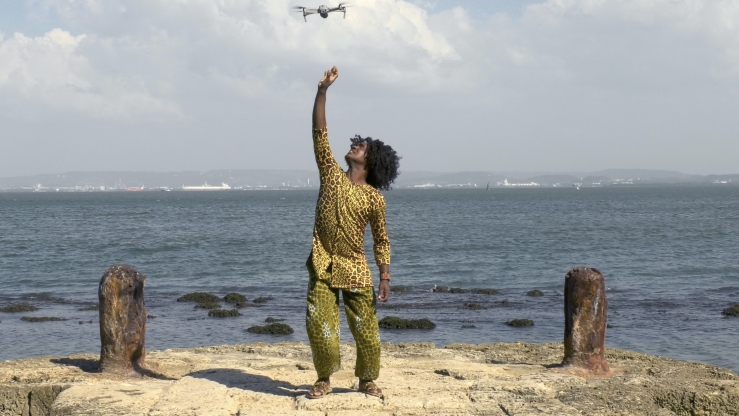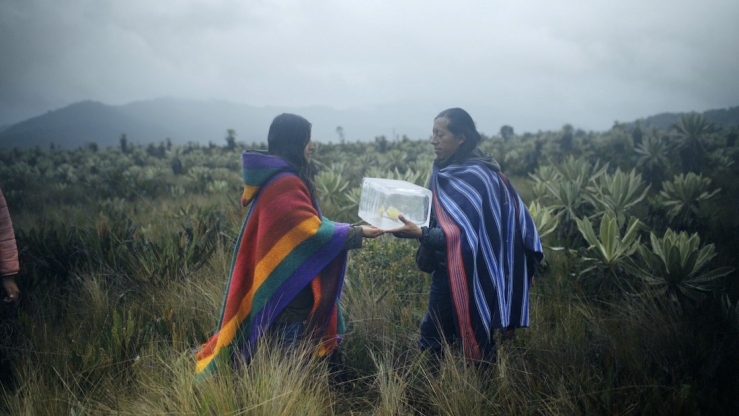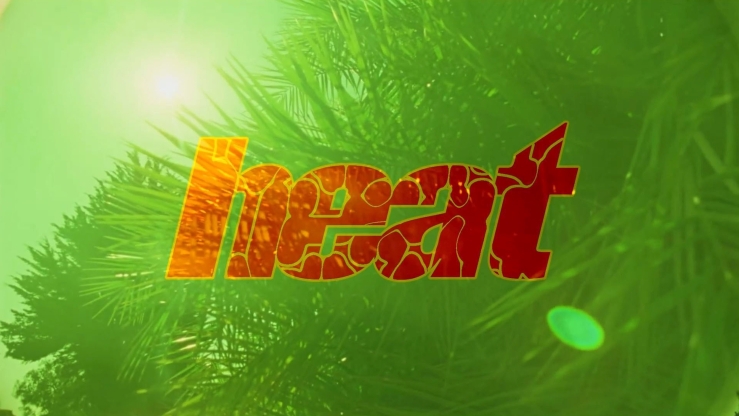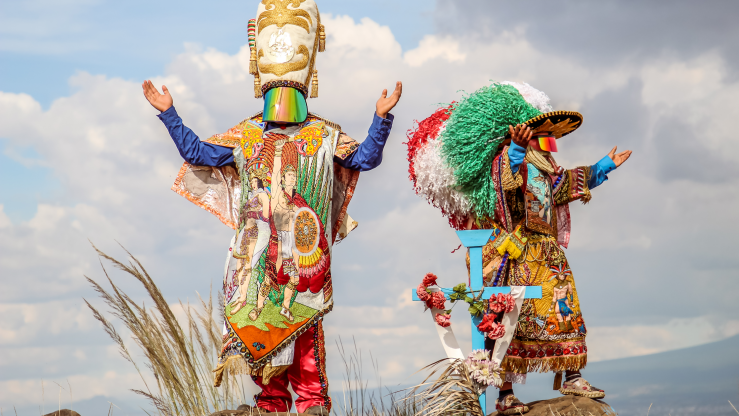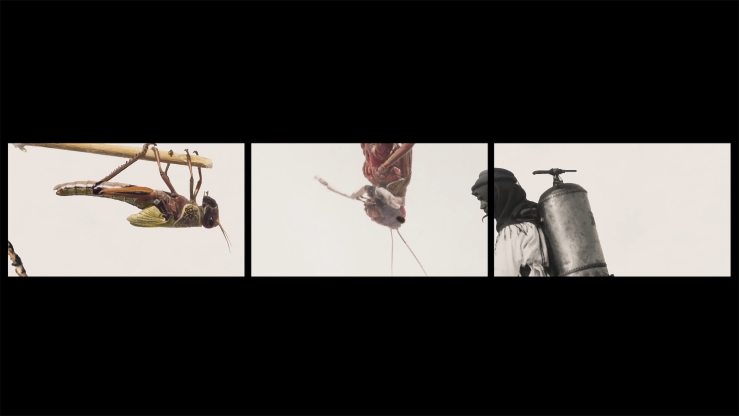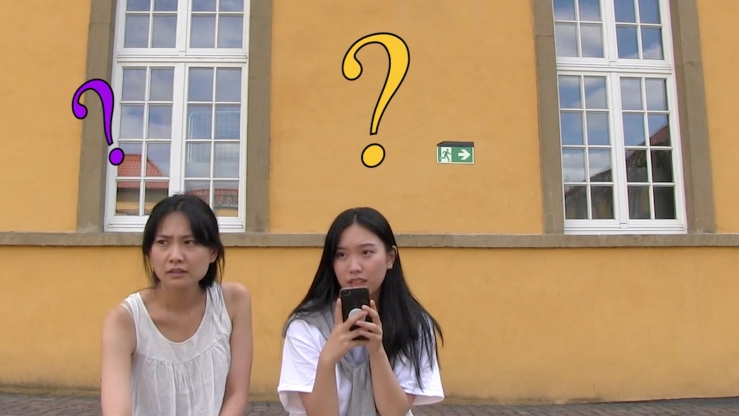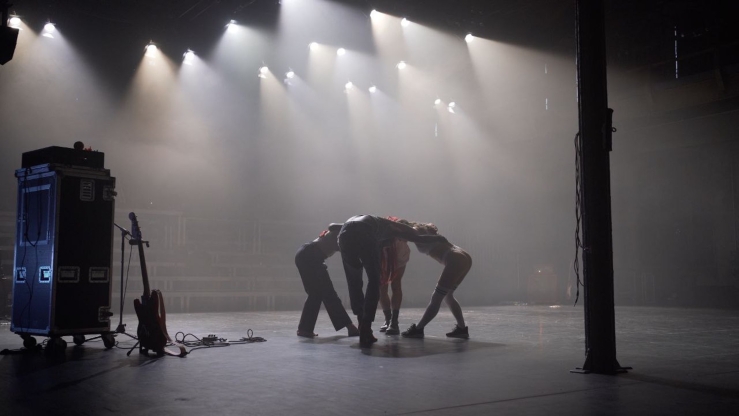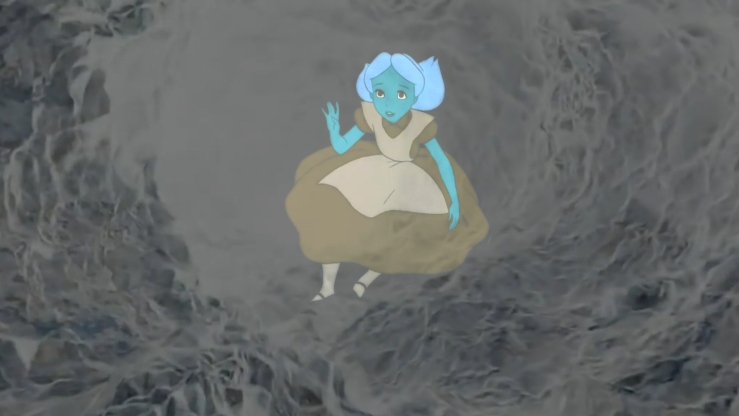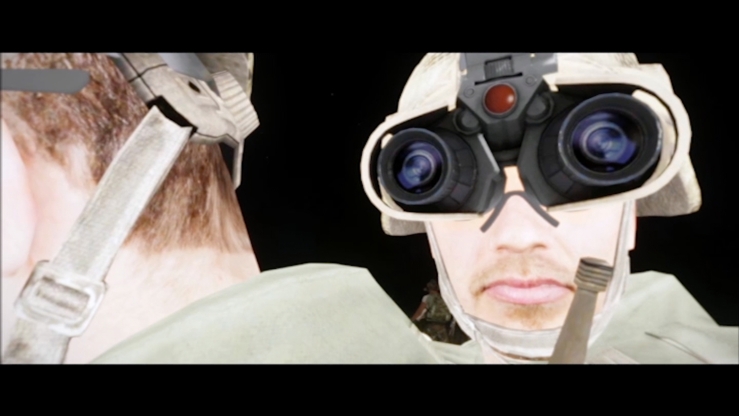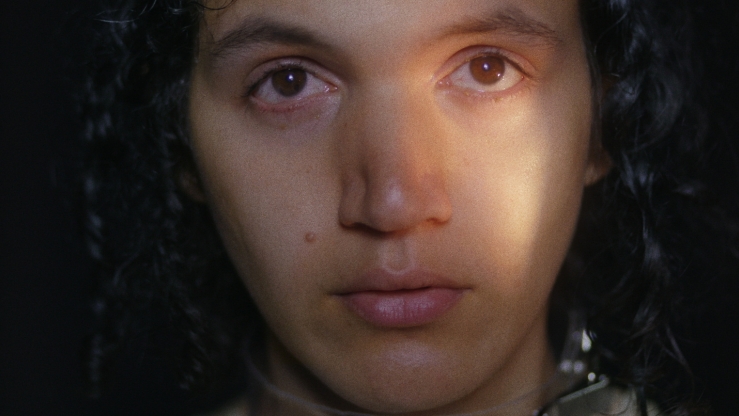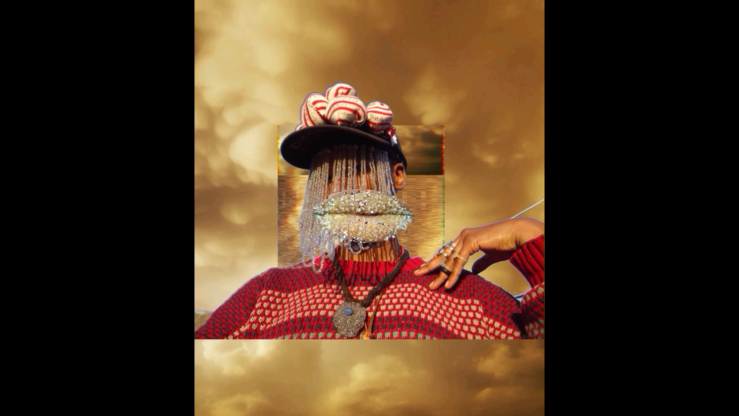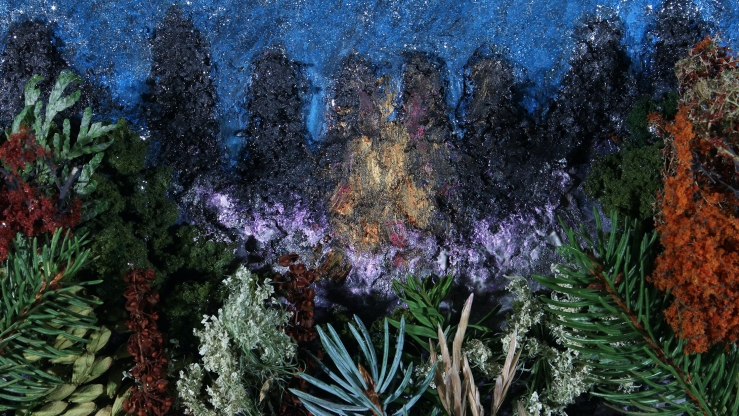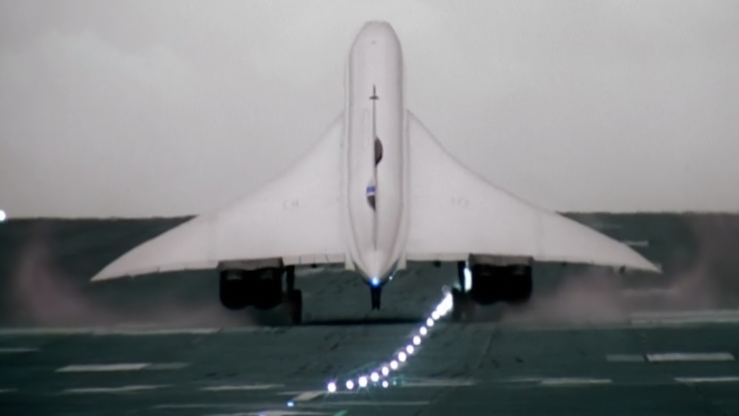Florin Tudor &
Mona Vatamanu &
Our age is sometimes referred to as the anthropocene — an epoch in which humans exert the strongest influence on the biological, geological and atmospheric processes of the earth. Global warming, whirlwinds, massive species extinction, air and water pollution, devastation of land areas etc. no longer fatefully affect the earth’s events as they did in the ice age, but are rather ›homemade‹. These facts are well known, but »the fact that we know does not seem to matter very much«, — sums up Ovidiu Tichindeleanu, philosopher, cultural critic and, in this video by Mona Vatamanu & Florin Tudor, ›architectural guide‹ through the Sala Omnia in Bucharest.*
In the video, the viewer accompanies Tichindeleanu on a tour from room to room. In his lecture, he mentions the former function of the Sala Omnia and the symbolic value of individual architectural parts. He explains the psychology behind the architectural structure, including staircases, corridors, choice of decor and materials, and thereby shows us the choreography of power exertion of Nicolae Ceauşescu’s dictatorial regime. The tour through the Sala Omnia takes place during the reconstruction phase; some architectural elements were removed to free the building from historical ballast. For Tichindeleanu, the Sala Omnia today is not merely a ruin of socialist civilization, but also of an efficient modernity characterized by resource exploitation and the waste of common property, »when we know our ill-fated destination but are still heading anyway blindly towards the realization that the ultimate consequence of our way of life is extinction.«
The work of Mona Vatamanu & Florin Tudor investigates symbols of power contained in architecture as a place of personal and collective memory in post-communist societies. In many of their projects, the most important point of reference is the environmental destruction caused by the unfettered expansion of infrastructure and industrialization. The exploitation of natural resources and reserves in the name of prevailing ideologies — whether socialist or capitalist — in order to assert one’s interests remain unchanged.
As Tichindeleanu explains, the name Sala Omnia derives from the Latin phrase ›omnia sunt communia‹, a demand by the reformer Thomas Müntzer, which states that everything should belong to everyone in common. But when resources that are needed in common are exhausted by their users through their collective actions and without prudence, all that remains for everyone is the wasteland — OMNIA COMMUNIA DESERTA. (Elisabeth Wynhoff)
* The building of the Omnia hall in central Bucharest was designed by the Romanian architect Caesar Lăzărescu as an auxiliary building to the headquarters of the Central Committee of the Romanian Communist Party in 1967. This is where the meetings of the party leadership, which was led by Nicolae Ceauşescu between the years 1965 and 1989, were initially held. From 1990 on, the building served as the seat of the Romanian Senate; afterwards, it was turned into a storage and practice facility for the Romanian National Opera. In 2016, ownership of the building was transferred to the National Center of Dance Bucharest (CNBD).
Supported by La Loge, Brussels
*We can only show an excerpt of this work in the online archive. For the complete version, please contact the artists.

